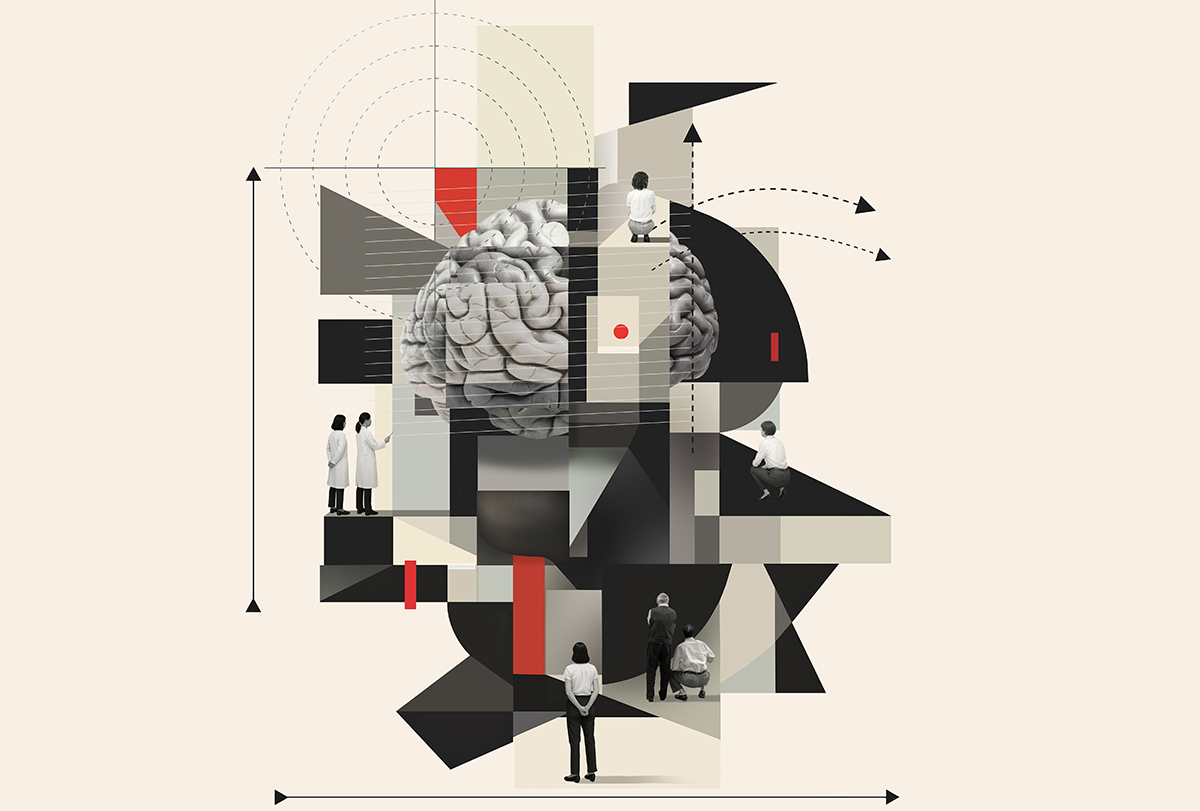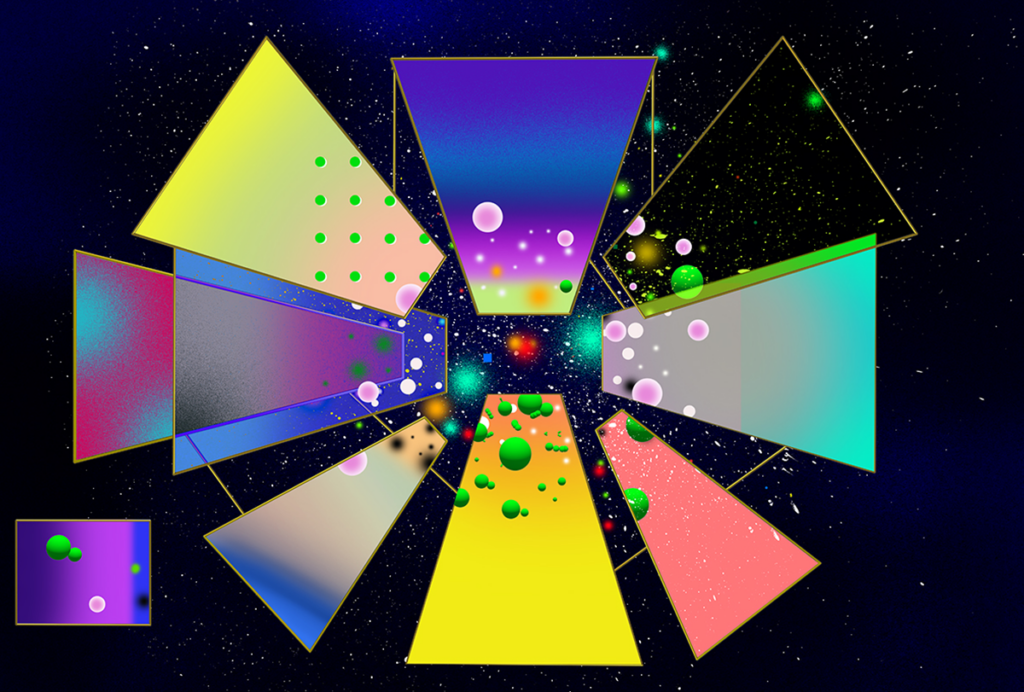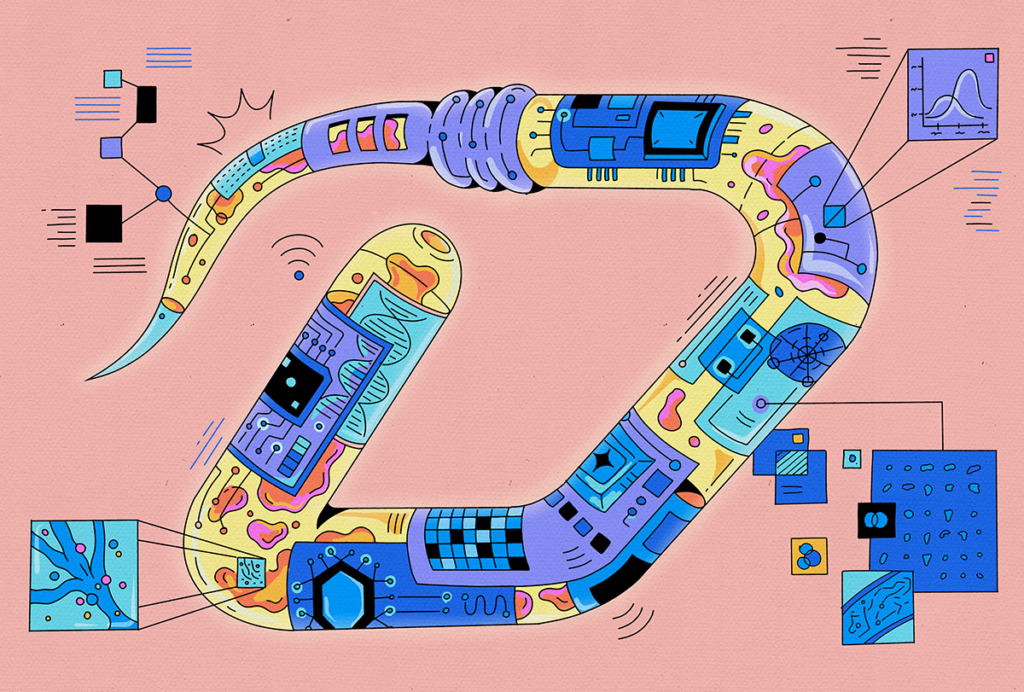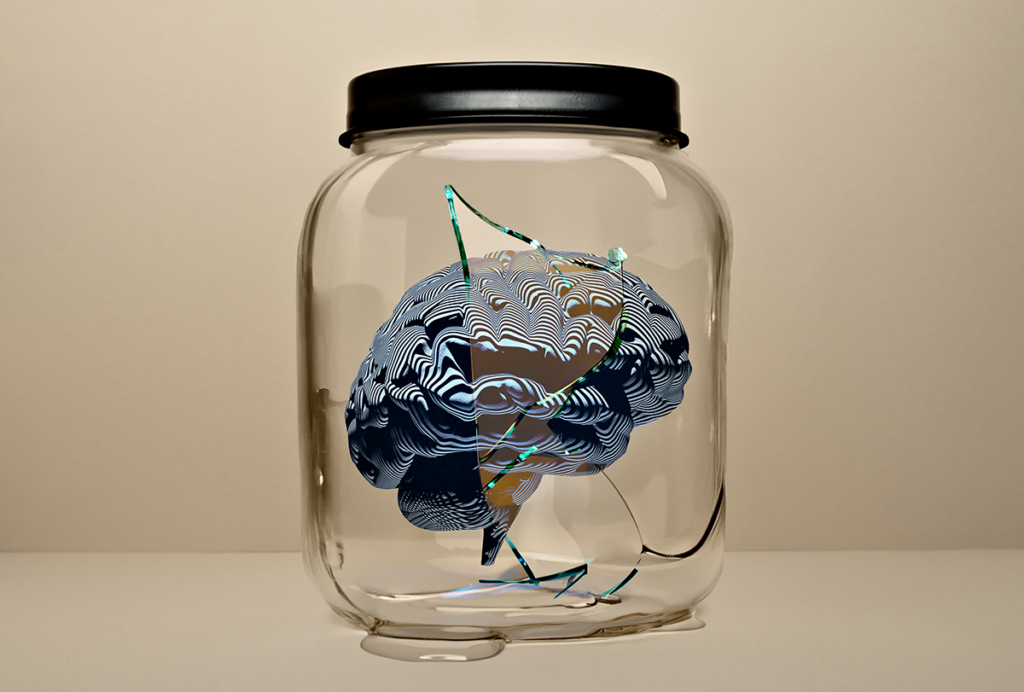
Neuroscience needs engineers—for more reasons than you think
Adopting an engineering mindset will help the field focus its research priorities.
Before taking up a position in an engineering department, I was warned by my neuroscience colleagues that engineers “don’t get biology,” and, by extension, they wouldn’t get me either. There is superficial truth in this. Few students I teach are interested in the structure, physiology or evolutionary origin of the nervous system. They want to build robots and language models that bypass biology’s seemingly inscrutable solutions to practical problems such as walking and talking.
This rift between “observe and understand” and “design and build” is actively encouraged in academia, and in society more generally. My department at the University of Cambridge, for example, is lumped into the School of Technology, along with computer science and management science. But most of my neuroscientist colleagues are in the School of Biological Sciences. I think this separation is doing the field a disservice. We need more engineers—and more of an engineering mindset—in neuroscience.
I won’t rehash the obvious case that engineers make tools and gizmos that enable us to extract ever more detailed measurements of the brain and its workings. Instead, I propose that to sharpen and accelerate scientific progress in neuroscience, we need to ask some of the same questions that engineers ask and adopt some of their methods, thinking and philosophy. I believe that an engineering mindset—one that searches for rational solutions to well-defined goals while acknowledging real-world constraints—will help us focus neuroscience research. This is because brains, and biology in general, provide the ultimate examples of purposeful systems in an otherwise meaningless universe. Purposeful systems don’t work by accident: There must be principles at play.
T
o make this case, I’ll first step slightly outside of neuroscience (though, if you’re a generous reader, you might say that I’m only stepping as far as neuroethology). It is a common quip that we would never have gotten anywhere close to creating functioning aircraft if we had based our designs on birds. Successful aircraft designs abandoned attempts to make wings flap and instead deliver thrust by separate means. Yet there is a strong consensus among experts that many of the early insights for aircraft design did in fact come from observing, and reverse engineering, bird flight.Basic wing design—and crucially, the ability of wings and tails to reshape into what aerospace engineers call “control surfaces” that generate lift, as well as steer and stabilize—is more fundamental to powered flight than is propulsion. Without these principles, powered flight in aircraft is impossible. Raw propulsion, on the other hand, has been lifting rockets into the sky since the middle of the Chinese dynastic era.
Aircraft design therefore represents an often unrecognized, yet inseparable, interwoven thread of ideas exchanged between biological observations and abstract design principles. This thread is analogous to the histories of connectionist artificial intelligence and neurophysiology, and even the histories of computer science and cognitive science. The founders of connectionism, Frank Rosenblatt, Warren McCullough and Walter Pitts, were a mix of neurophysiologists and engineers who began with the brain as the natural model of computation in the nascent field of cybernetics. In the same era, Alan Turing, seen by many as the founder of modern computing, was driven by his own desire to understand human cognition. Intervening decades saw a tension between those arguing in favor of “brain-inspired” connectionist AI and those who saw these efforts as a distraction from clean, abstract statistical learning theory. I would argue that brain-inspired AI is what we see around us today.
Some may balk at this. There is a strong urge to divorce the practical application of ideas from the development of the ideas themselves, especially when the ideas are so powerful in their abstract form that they can take us far from their origin. There is also an unfortunate human urge to split and simplify ideas, and even people. Long after powered flight became viable, Theodore von Kármán, a pioneering aerospace engineer who won the 1962 National Medal of Science for Engineering, stated “Scientists study the world as it is; engineers create the world that has never been.” But is this really the world that never was? Or are we in a world shaped by our knowledge of the world that exists? Notice, too, the reference to the identities of individuals rather than disciplines: scientists, as opposed to science; Engineers (with a capital E), as opposed to engineering. Human beings love clean dichotomies—and clean ways to parcel up people, careers, university departments, research budgets and, ultimately, human thought.
But here’s another quote, this time from a review of our current (scientific) understanding of bird flight: “Researchers within the field of animal flight now often employ multilevel systems approaches, which are borrowed from engineering, specifically control and dynamical systems analysis and design.” There is something beautiful in seeing ideas from a century-old engineering discipline—one of the most hard-nosed, no-nonsense engineering disciplines—ultimately, inevitably, returning to their roots. All the practical lessons we learn trying to build things turn out to shed even deeper light on the natural phenomena that inspired us at the outset.
I believe the same thing is happening, and should be accelerated, across most areas of neuroscience. Many of our big insights into brain function come from trying to mimic it. This lesson should guide how we organize research programs. This is not an argument against discovery science; basic curiosity formed the inspiration for artificial flight, after all. I propose that an engineering mindset can help shape large discovery programs in neuroscience by refocusing some of our goals.
For example, it is common practice to build simulations that reproduce or assimilate neural data at some level of granularity, with the hope that these reveal some aspect of brain function. Instead, we might want a model that could make real-time predictions to enable targeted manipulation of brain state.
Another example: A motivating goal for the National Institutes of Health BRAIN Initiative was to record from as many neurons as possible, simply because more data is always better. This sparked debate from the start. However, recasting goals in terms of pointed engineering outcomes can bring clarity. We may ask what resolution of neural signal is sufficient for decoding behavior with a given level of accuracy, or for controlling a brain-machine interface in real time. Better data and tools will follow as a matter of course.
S
uccess or failure in either of those examples would have strong scientific ramifications for any theory about how information is encoded in the brain. And a clear marker of success or failure raises the stakes, so that success will give greater confidence that any underlying principles are sound. Going back to the powered flight example: it is one thing to know how Bernoulli’s principle relates fluid velocity to pressure. It is quite another to feel comfortable and safe at 40,000 feet.This mindset is being adopted in many parts of the field already: Brain computer interfaces are now recognized as research tools as well as being promising therapeutic technology. Predictive, data-driven models are enabling targeted interventions in living nervous systems, such as predicting and intervening in seizures.
I can almost hear an interjection at this point: “What about physicists?” Yes, physicists have done a lot to further our understanding of the brain (they have also led us up a few blind alleys!). But when physicists—or indeed STEM graduates in general—approach the brain with the goal of manipulating its function in a specific way or building an analogous system that can perform brain-like tasks, they are, regardless of their training, doing engineering.
However, because of differences in training, Engineers (with a capital E) know things that other “quantitative” scientists, including physicists, don’t. They know how to study and design systems, not in an abstract and hand-wavy way, but in a way that allows the design of complex interacting systems on which our lives literally depend. They understand feedback control. They understand the famous reality gap between a design and a realization. Most importantly, they have a certain humility in acknowledging limits of understanding and working around them. You won’t catch an engineer trying to formulate a grand unified theory of the brain (there isn’t one, by the way!).
One could summarize this skill set, mindset and knowledge base by stating the obvious: Engineers know how to make things work, using fundamental principles and practical constraints. This is what makes engineering closer to biology than to other physical and natural sciences. Biology is all about things that work, not things that simply happen.
So let’s not confine engineers to the workshop or the data center. Let’s bring them into neuroscience, as scientists. And at the same time, it won’t hurt to try to think like engineers ourselves, at least some of the time.
Recommended reading

The challenge of defining a neural population

Systems and circuit neuroscience need an evolutionary perspective

‘Natural Neuroscience: Toward a Systems Neuroscience of Natural Behaviors,’ an excerpt
Explore more from The Transmitter

Whole-brain, bottom-up neuroscience: The time for it is now

Breaking the jar: Why NeuroAI needs embodiment
